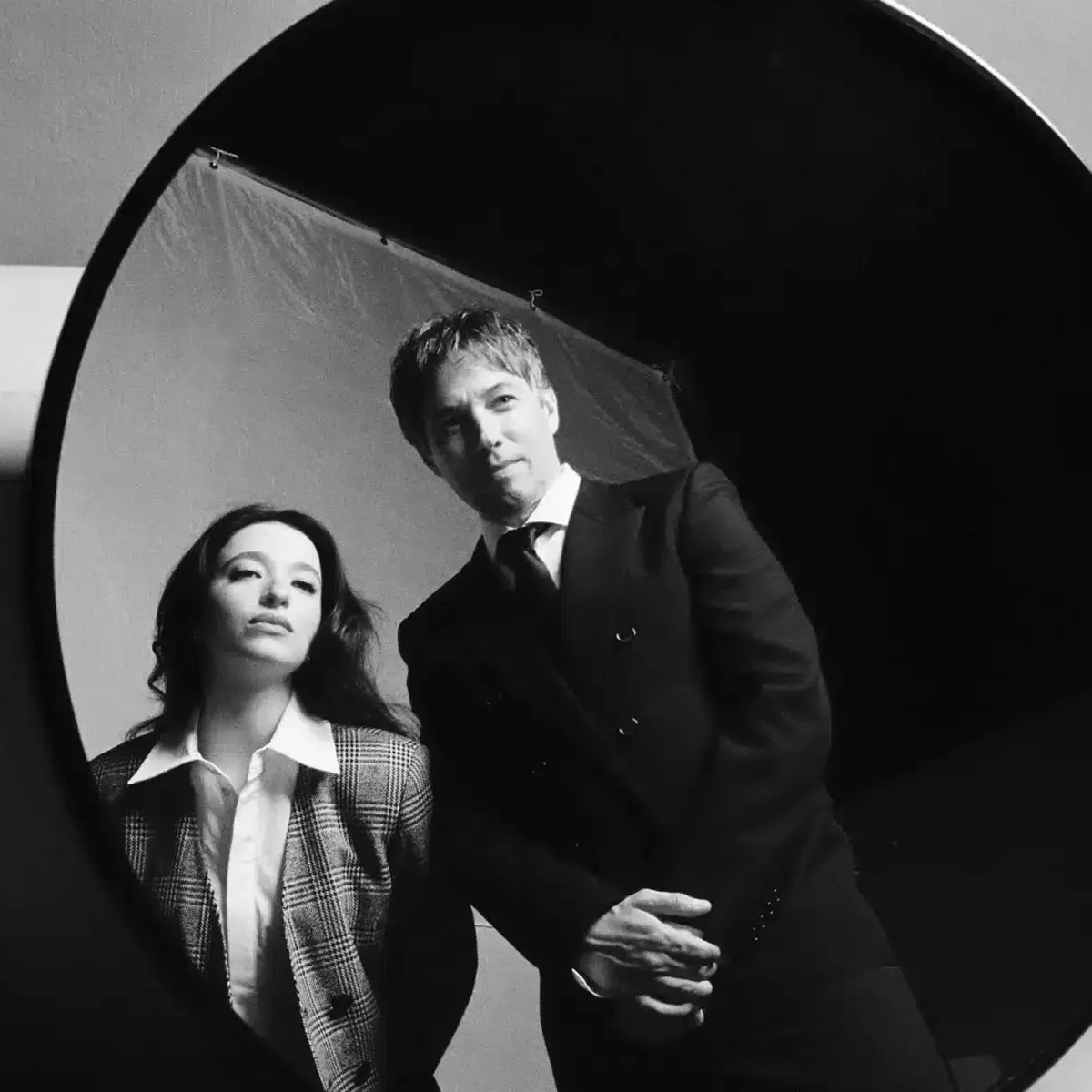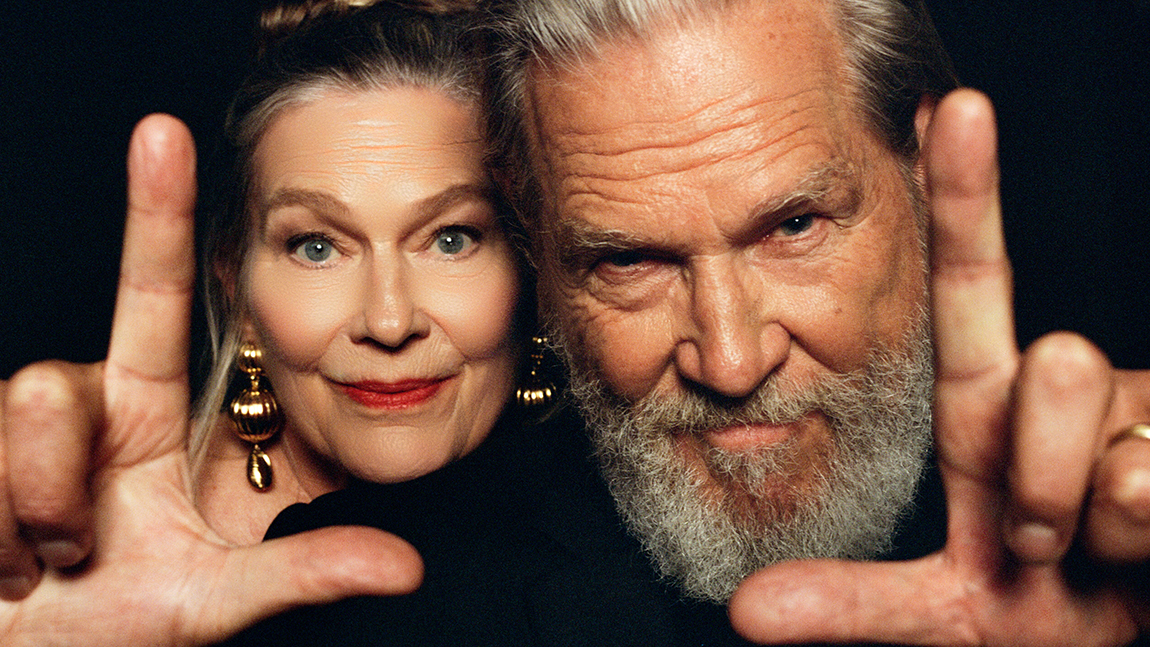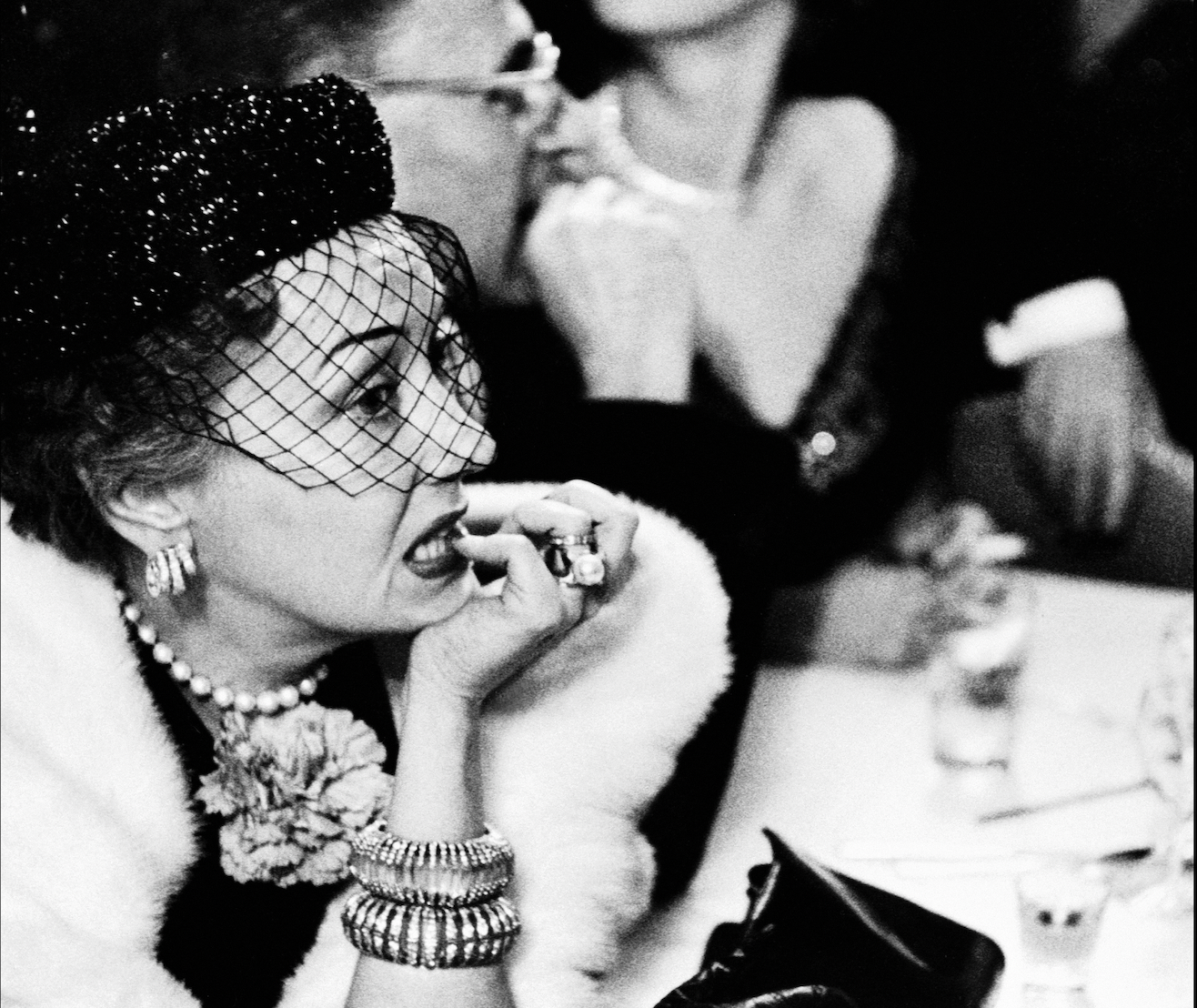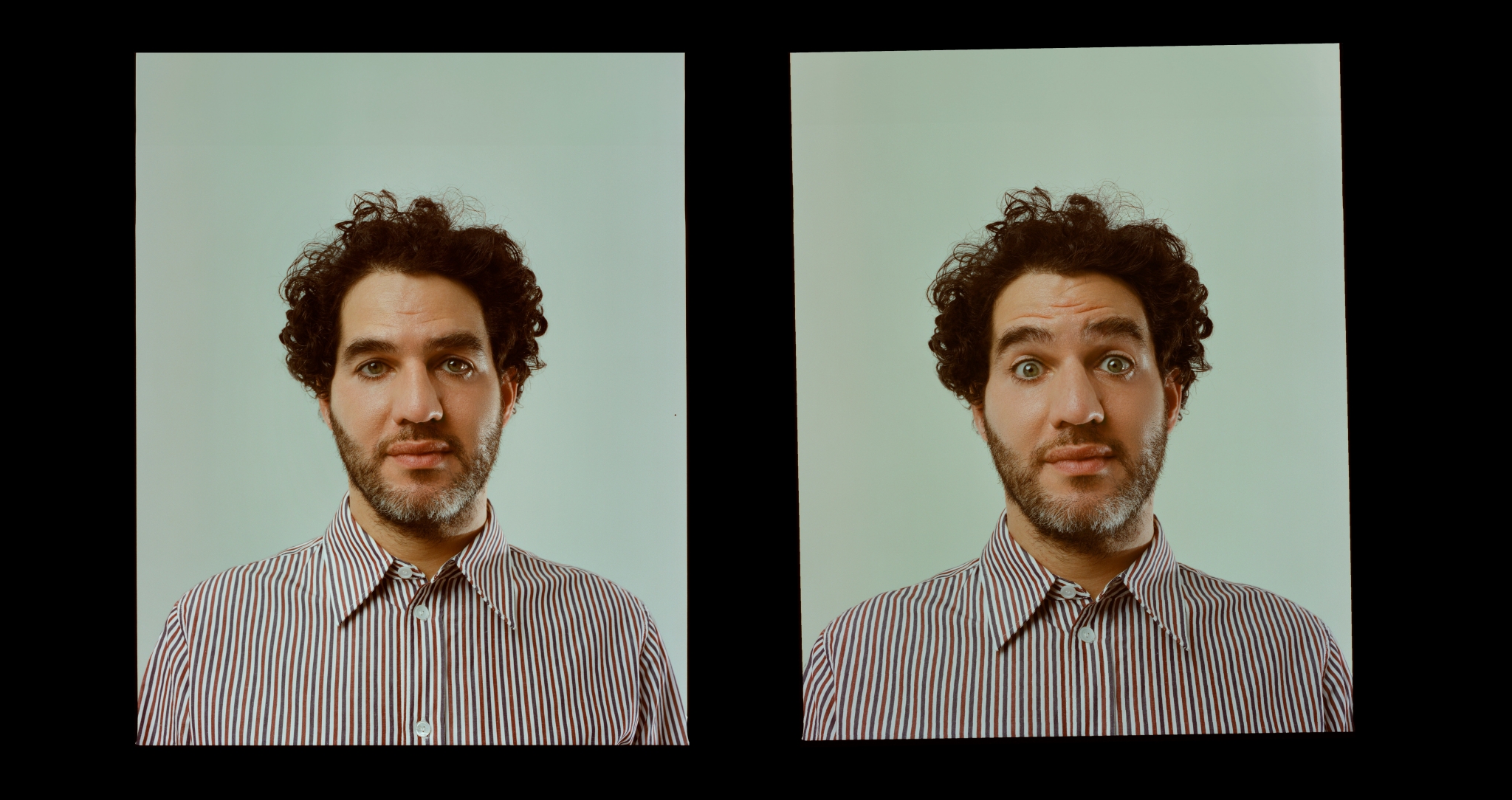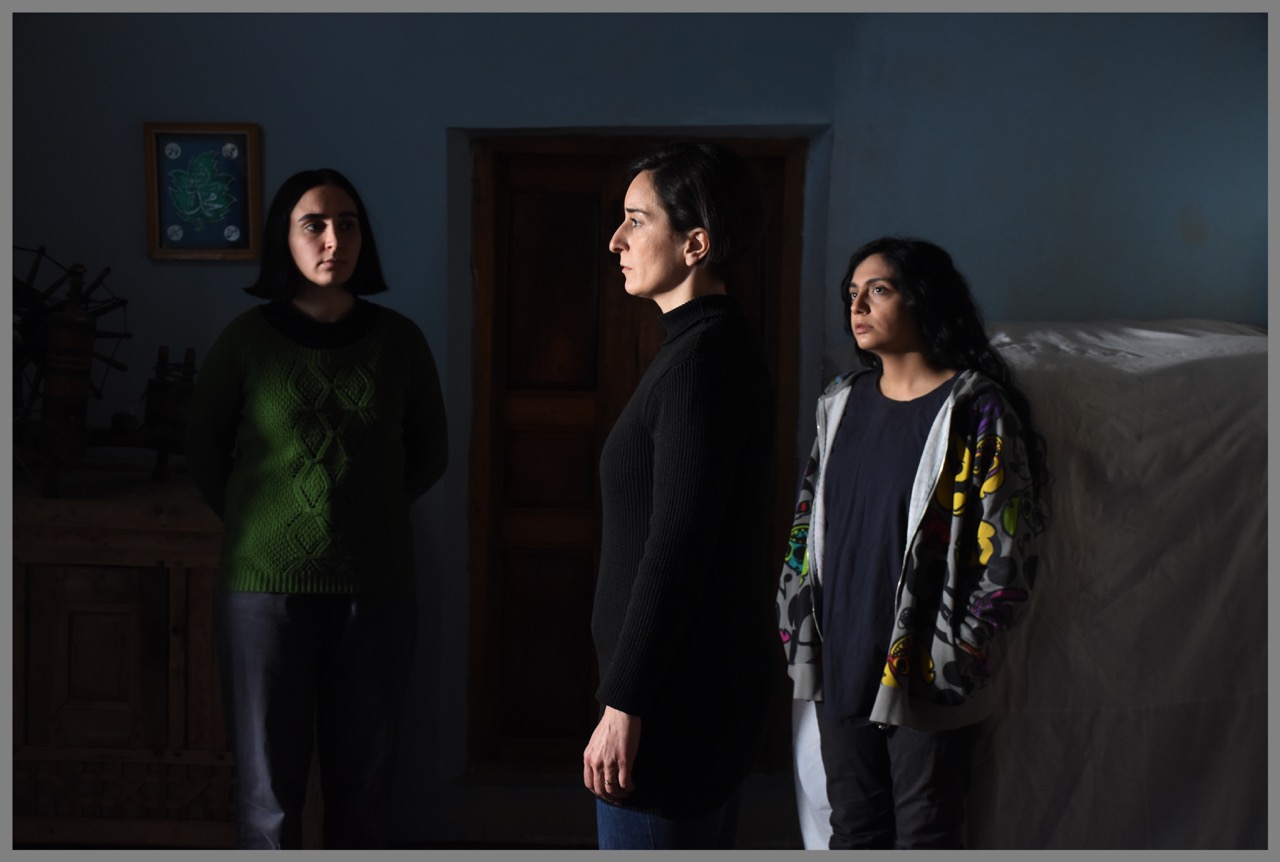

Mohammad Rasoulof discusses The Seed of the Sacred Fig, a saga that shows the unravelling of relations between a father, his wife and three daughters, under a patriarchal regime.
In Mohammad Rasoulof’s Oscar-nominated film The Seed of the Sacred Fig, viewers don’t have to wait long for the film’s titular metaphor. The opening on-screen text describes the life cycle of the Ficus Religiosa, a parasitic fig tree whose roots spread to nearby trees and drain the life out of its unwilling hosts. The act of suffocation ensures the tree’s survival, but only to the detriment of others. This is a thinly veiled condemnation of the oppressive apparatus upholding Iran’s authoritarian regime, the very same forces that drove the director himself out of Iran.
In May, Rasoulof—a titan of Iranian cinema—revealed that he had fled his homeland on foot and has since been exiled in Germany. His journey from Iran across a mountainous border, likely into Iraq or Turkey, was in order to escape an eight-year jail sentence for charges of collusion and propaganda levied by the courts. Days later, The Seed of the Sacred Fig debuted at Cannes to a 12-minute standing ovation and rave reviews.
The film follows Iman (Missagh Zareh), an upstanding attorney in Tehran, as he navigates his newly promoted role as an investigating judge in Iran’s Revolutionary Court. Iman’s wife Najmeh (Soheila Golestani) is elated by the news and its promise of a better standard of living, including separate bedrooms for her daughters: 21-year-old Rezvan (Mahsa Rostami) and teenage Sana (Setareh Maleki). But the promotion of a lifetime is not without personal costs. Iman and Najmeh tell their daughters they must act decently, observing the proper hijab and keeping only good company. Iman also tells the family to keep his new role private, as information about judges can be posted online by critics to facilitate attacks. What he does not tell his daughters is that he has been issued a gun for self-defense.
Rezvan and Sana soon face even more domestic restrictions as Iman contends with the eruption of Iran’s Jin, Jiyan, Azadi (Woman, Life, Freedom) protests in real time. The youth-led movement began in late 2022 as a protest against the morality police’s killing of Mahsa Amini, a 21-year-old Kurdish woman who was allegedly beaten to death while in custody. It galvanized into a rejection of the regime at large. Rasoulof seamlessly blends documentary footage of the violent crackdown on dissenters with his own on-screen horrors. The young sisters use social media and VPNs to surpass Iran’s media censorship and make sense of the unrest on their doorstep, while clashing with Najmeh about what is right and just.
When Iman’s gun goes missing inside the house one night, the family slowly begins to fracture under the weight of his dominion. As the women in Iman’s home fail to submit to him, he is crippled by his hamartia—paranoia.
Rasoulof and his translator joined A Rabbit’s Foot to discuss his decision to leave Iran, the suppression of filmmaking, and how families can fragment under the theocratic patriarchy.
Armani Syed: Salaam, Mohammad. Can you tell me about your journey to filmmaking and how the stories you tell have changed over time?
Mohammad Rasoulof: I started out in theatre, working in theater as a young child, a teenager, but then I gradually fell in love more and more with cinema. I initially really loved documentaries, and started making documentaries, and then I slowly moved into fiction filmmaking. I made eight feature-length fiction films and two documentaries. And I’m here with you now. I’ve had to make most of my films underground, and not one of my eight feature length fiction films has been shown to the state in a cinema in my country, Iran.
AS: With that in mind, could you tell me about your decision to leave Iran last year?
MR: After years and years of dealing with the censorship apparatus, the judiciary, the security apparatus, various imprisonments and finally receiving an eight-year prison sentence, that is before the sentence for this current film, which we’re all awaiting, I decided I had to make a choice. The choice between accepting to spend eight years in prison and therefore accepting the role of the sacrificed victim artist, which, for me, was very difficult to accept or to make a choice that would allow me to keep making films, and I chose the latter. And that meant leaving Iran illegally and contacting the people who, when I was in prison, had told me that if I ever made the decision to leave, they would help me. I was making use of that offer and of their help and leaving Iran over land. And 28 days later, I was in Europe.
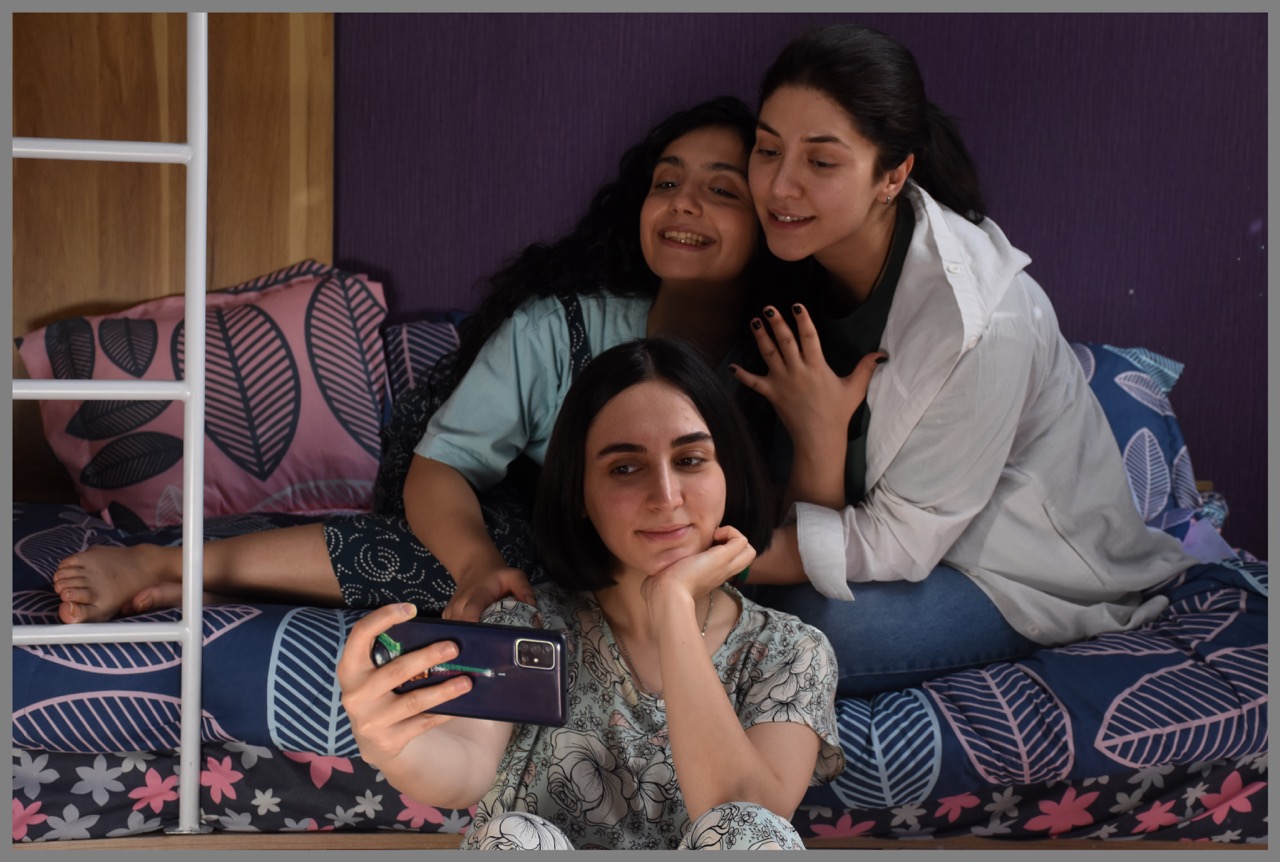
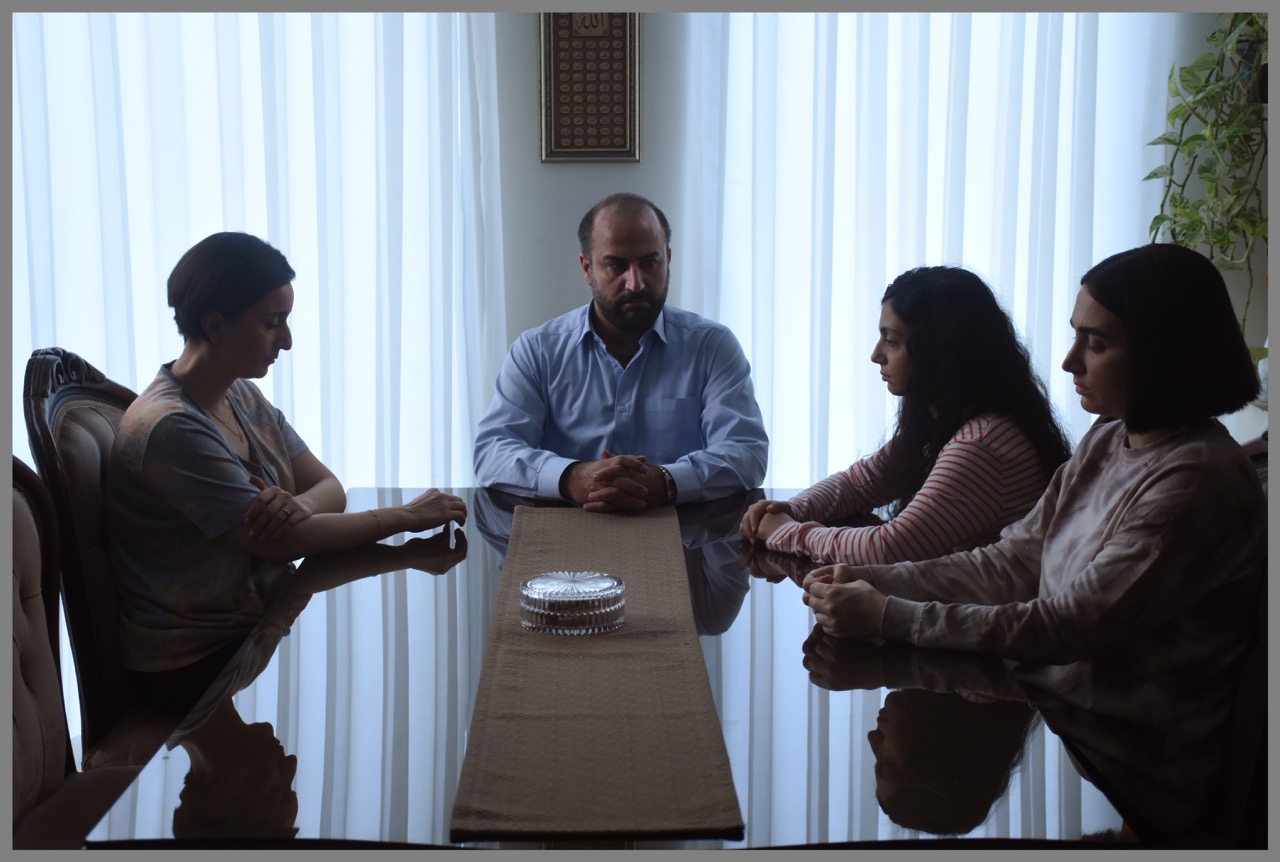
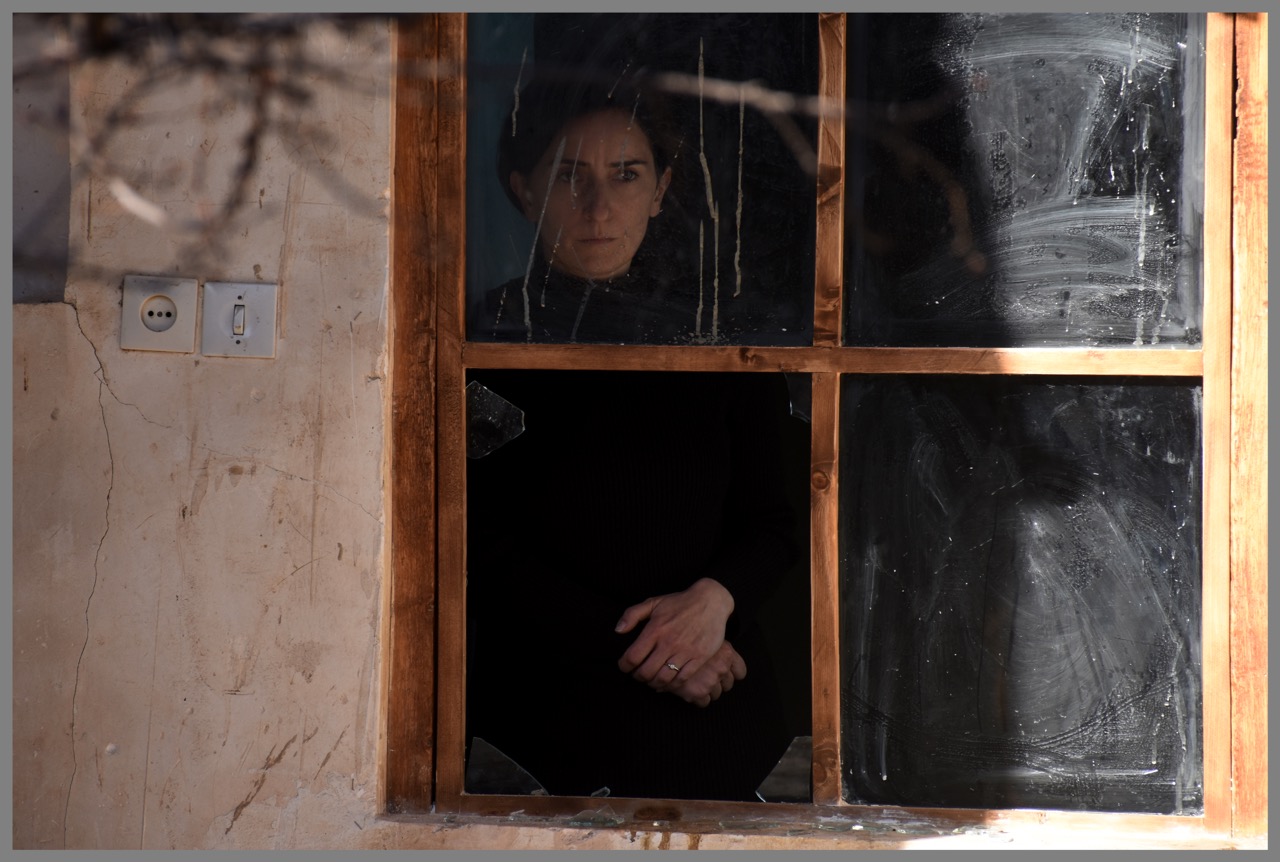
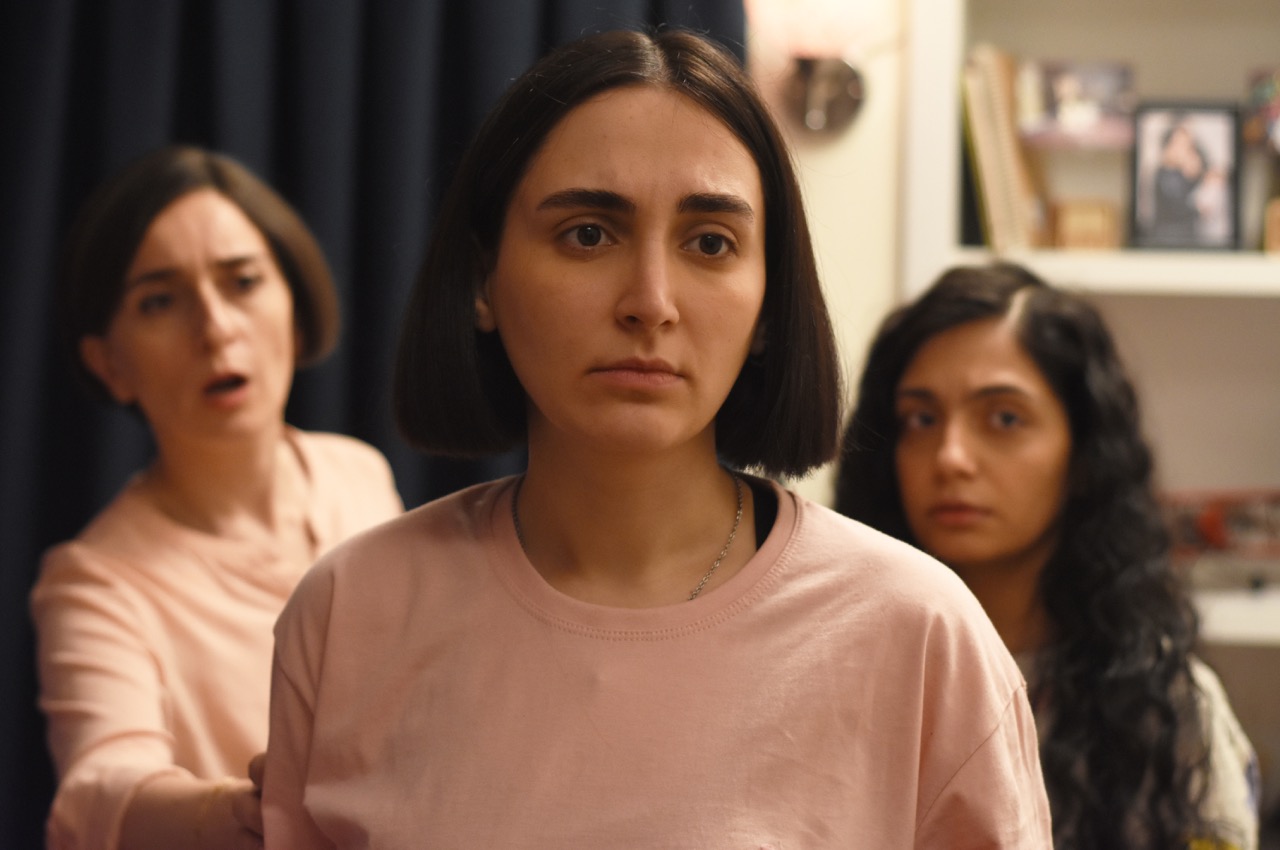

AS: And you’re based in Germany now, is that a place that you’re starting to find a sense of home in?
MR: I knew Germany a bit already, although I hadn’t been there in eight years. I think you do find ways to adapt yourself to a new environment, so yeah, I suppose.
AS: We’re speaking just after the Academy has nominated the film for Best International Feature. Do these forms of recognition mean something to you? Will you be attending the ceremony in March?
MR: When recognition of this sort takes place, of course, they are very important in attracting even wider attention and a greater spotlight on the film. So of course, I’m very happy, and I think it’s very important, I’ll do everything in my power to be there at the ceremony.
AS: With regards to The Seed of the Sacred Fig, what was it about the story of this particular family that you felt compelled to tell?
MR: To me in this family was the fact that within such a traditional religious family, you get the young generation, the daughters, sort of finding a new version of truth and fighting about that new version of truth thanks to social media. But also, the rift that came to be inside the family, I thought was very interesting. It was also important to me to tell a story about a family like this one, that, because of the specific conditions of Iran, came to tell a wider story and could, in fact, somehow symbolize the structure of power inside the country.
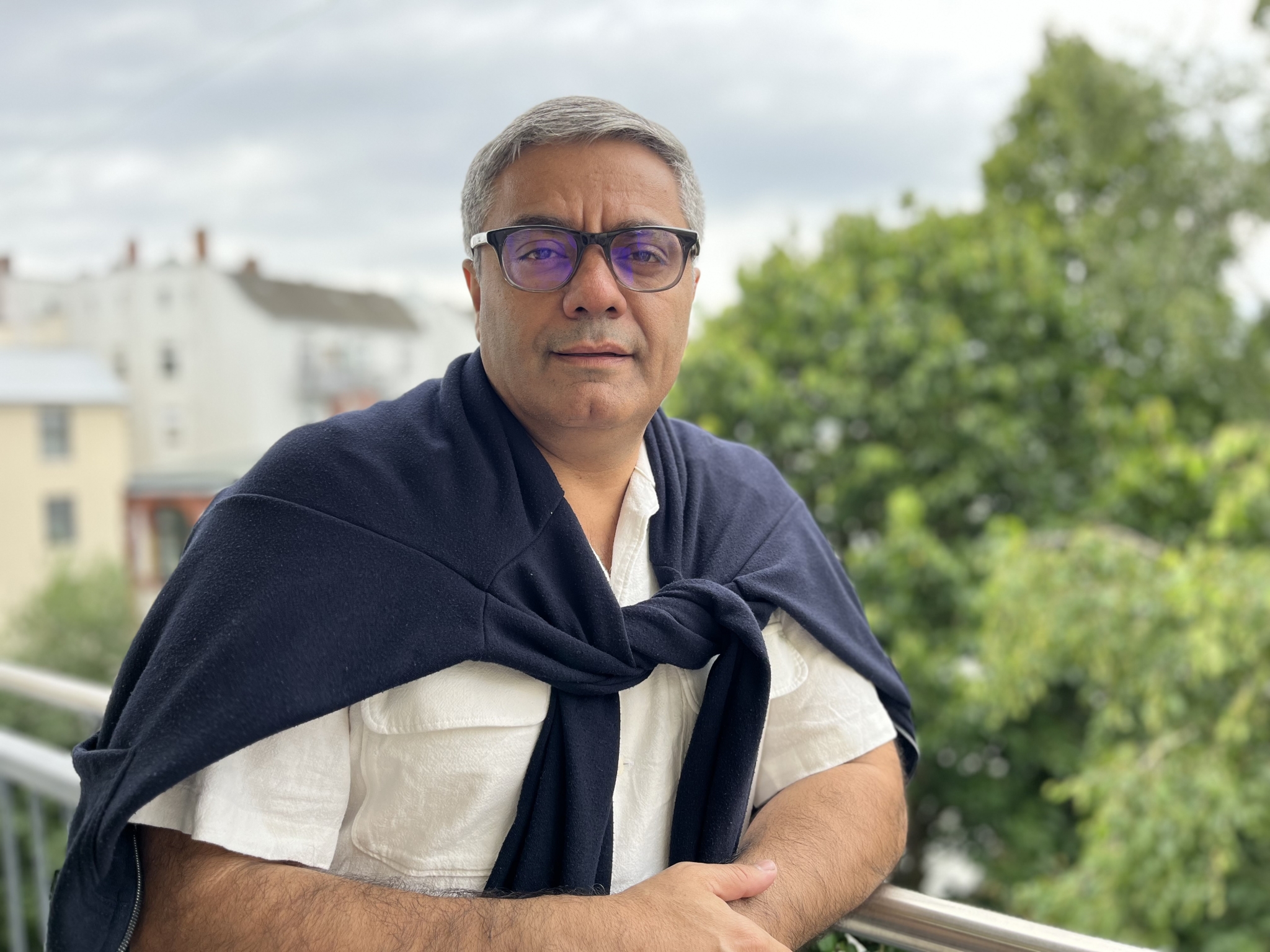
When you know that you’ve stood up and disobeyed the whole apparatus that keeps trying to erode your sense of self respect, your dignity, your freedom, knowing that you’ve stood up against it is a great feeling.
AS: And did you feel a sense of catharsis making a film about the very system that has enacted its harm on you?
MR: Of course it’s very difficult, but also when you know that you’ve stood up and disobeyed the whole apparatus that keeps trying to erode your sense of self respect, your dignity, your freedom, knowing that you’ve stood up against it is a great feeling.
AS: You were in prison during the start of the 2022 protests. I wonder how you became aware of what was developing outside. How long did you expect these protests to last?
MR: I was arrested a few months before the Woman, Life, Freedom revolt began. But you know, even in prison, news [arrives] on a daily basis. And then also, there’s new prisoners that keep coming in and telling you what’s just happened. You’re not isolated from what’s happening outside. And of course, we were all very excited. We certainly could not predict how long we thought it would last, but we thought it might be the end of the system we knew.
AS: I’m especially curious about any conversations you were having with women when you had left prison and how you poured that into the female characters?
MR: Most of the material that appears in the film, the characters, the conversations, the film’s raw matter, derives from field work I did, interviews I conducted with young women and I think this young generation in Iran is extremely courageous. They’re very committed, and they know what they want, and they know how to request their rights.
AS: You merge social media footage and real life scenes with your own depictions of violence in the film, and they sort of blend into one inseparable horror. Is this something you wanted to convey consciously?
MR: No, my task was to recount what was going on outside the apartment of a family that had become trapped in it, and how it upset and changed the entire pre-existing balance in that family. And at the same time, I also wanted to draw a light onto the importance of social media in the movement in Iran and the world today.
AS: It made me wonder what happens when a protest movement that captured the world’s attention goes quiet? How do people continue the work?
MR: It’s ongoing as we speak, although we might hear less about it, I think it’s simply [that] this young generation is waiting for the right occasion to rise up again.
AS: Can we talk about paranoia for a second and what it can drive people—specifically men like Iman—to do.
The question that interested me was how obedience and submission to power and ideology can lead to extremism. And how that extremism can lead someone to close their eyes and forget all their human instincts and qualities, and therefore leads them to violence.
AS: I feel like that’s exactly what we watched here. A demonstration of how humanity can drain from a person.
MR: I think it’s clear that in a totalitarian system where its agents have complete control, how much that leads them to forgo their humanity. I think in the last scene towards the end of the film, also when the younger daughter broadcasts those tapes, those sounds, and tries in every way to make him open his eyes and regain his humanity, he chooses not to.
The Seed of the Sacred Fig is out in UK cinemas on 7th February.

